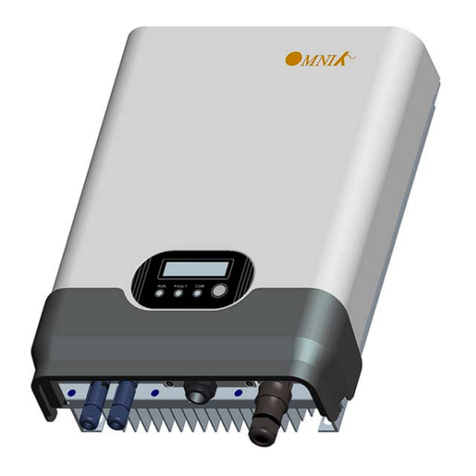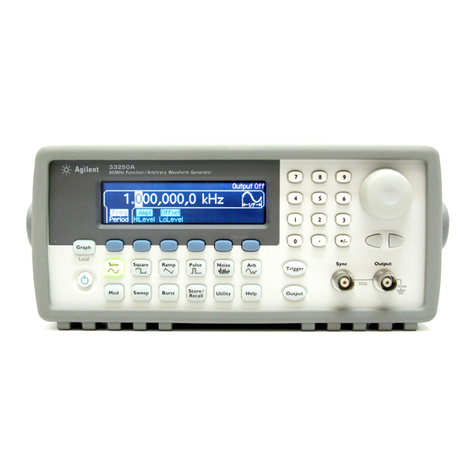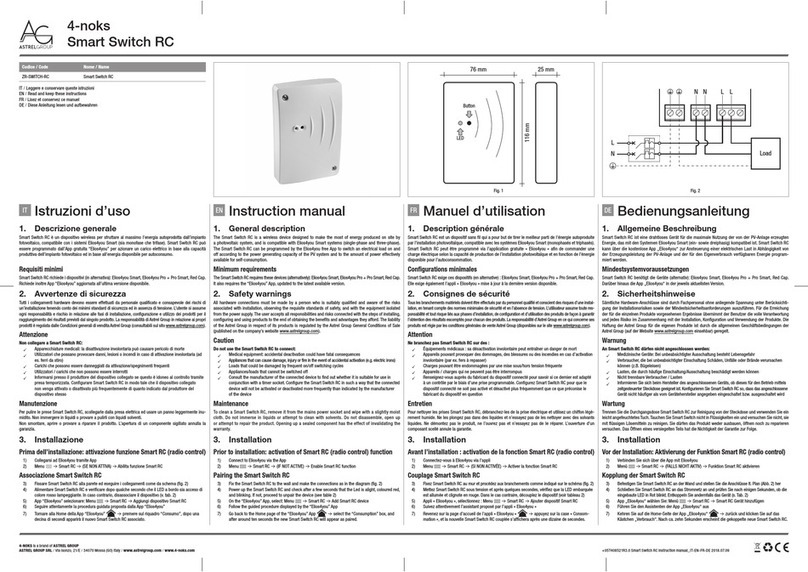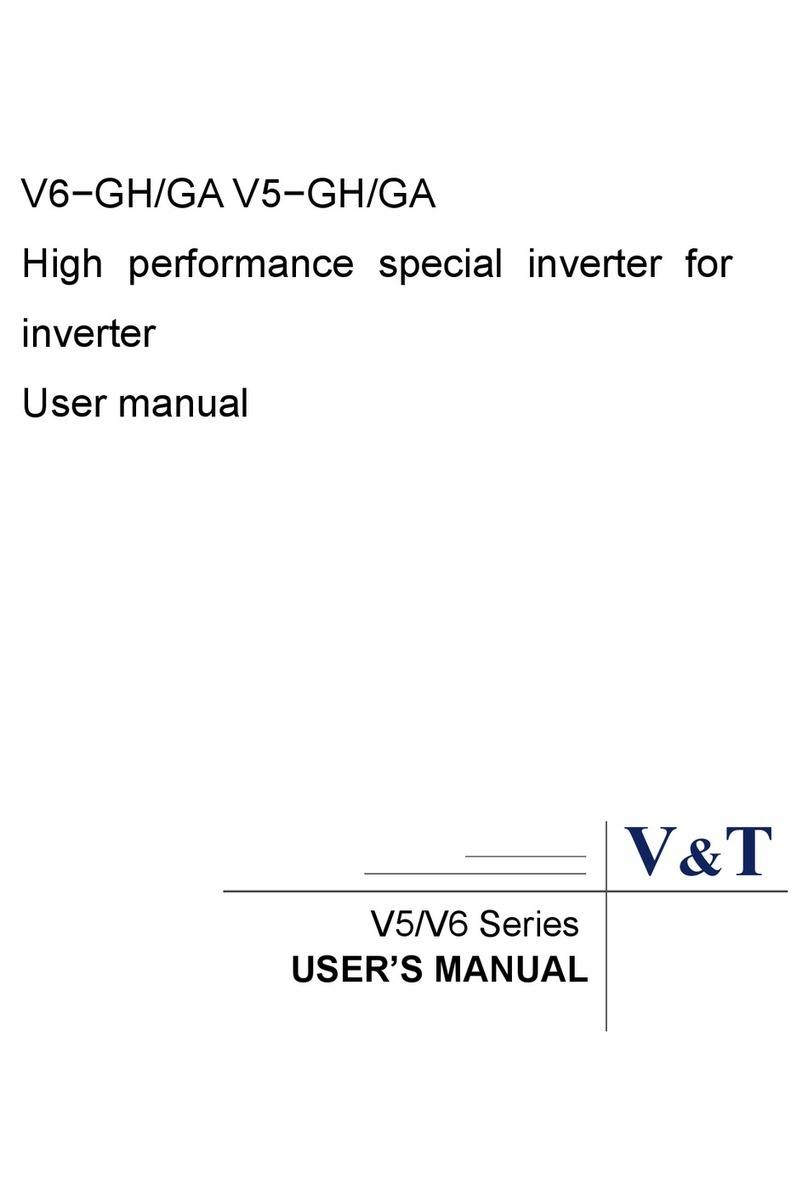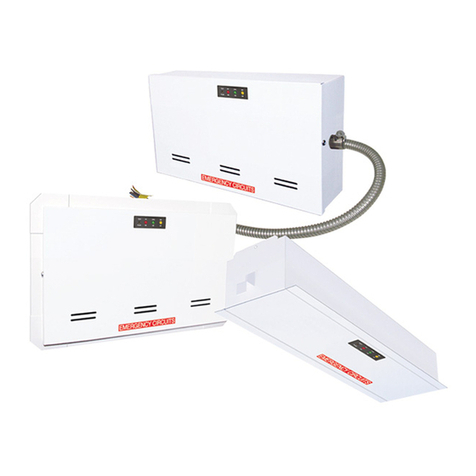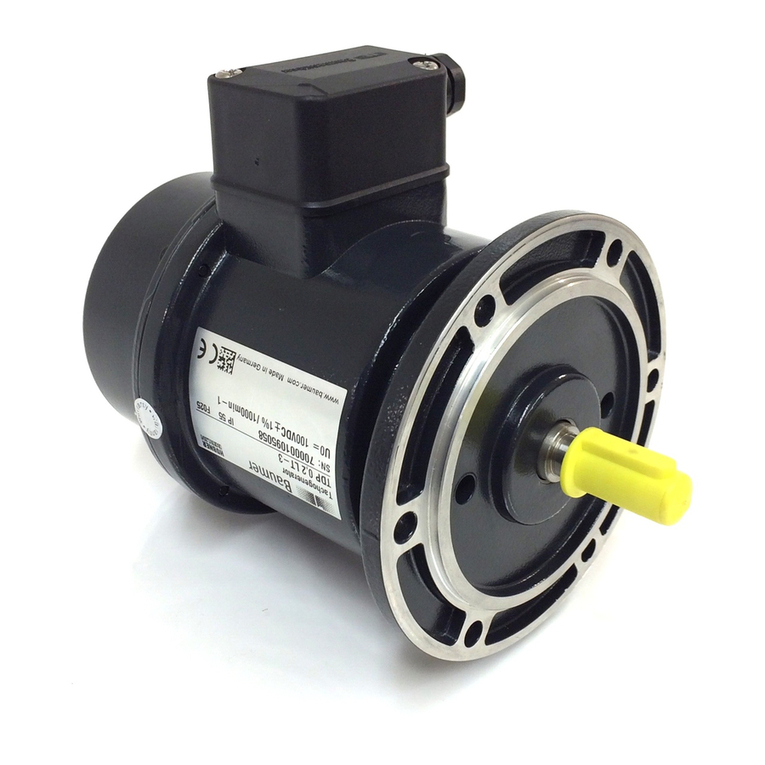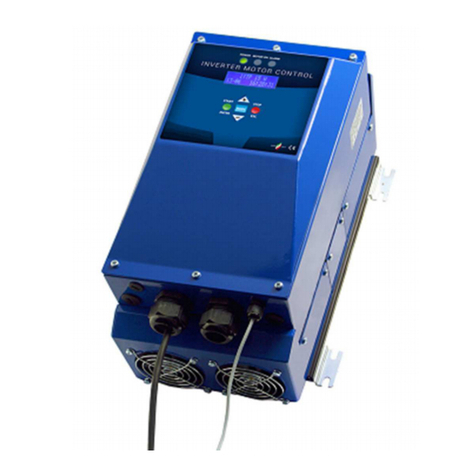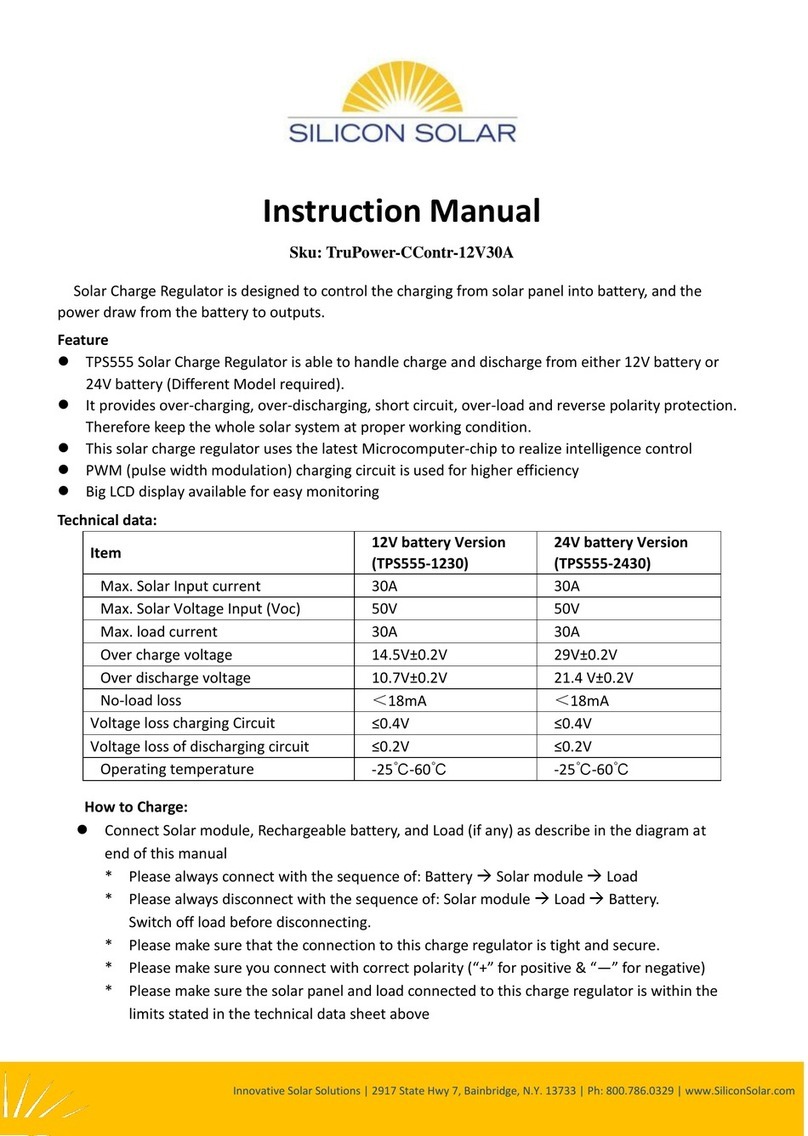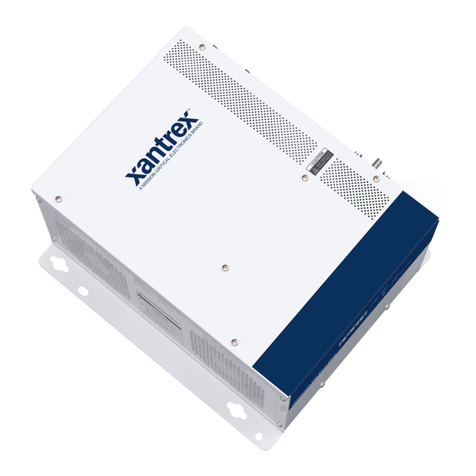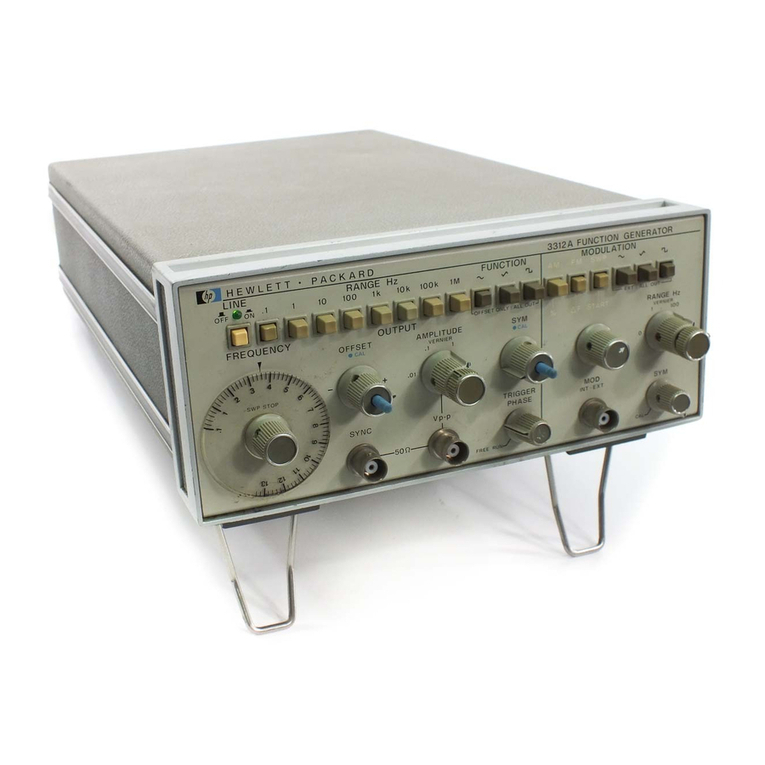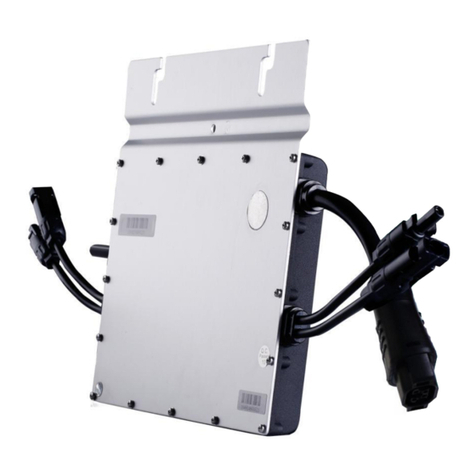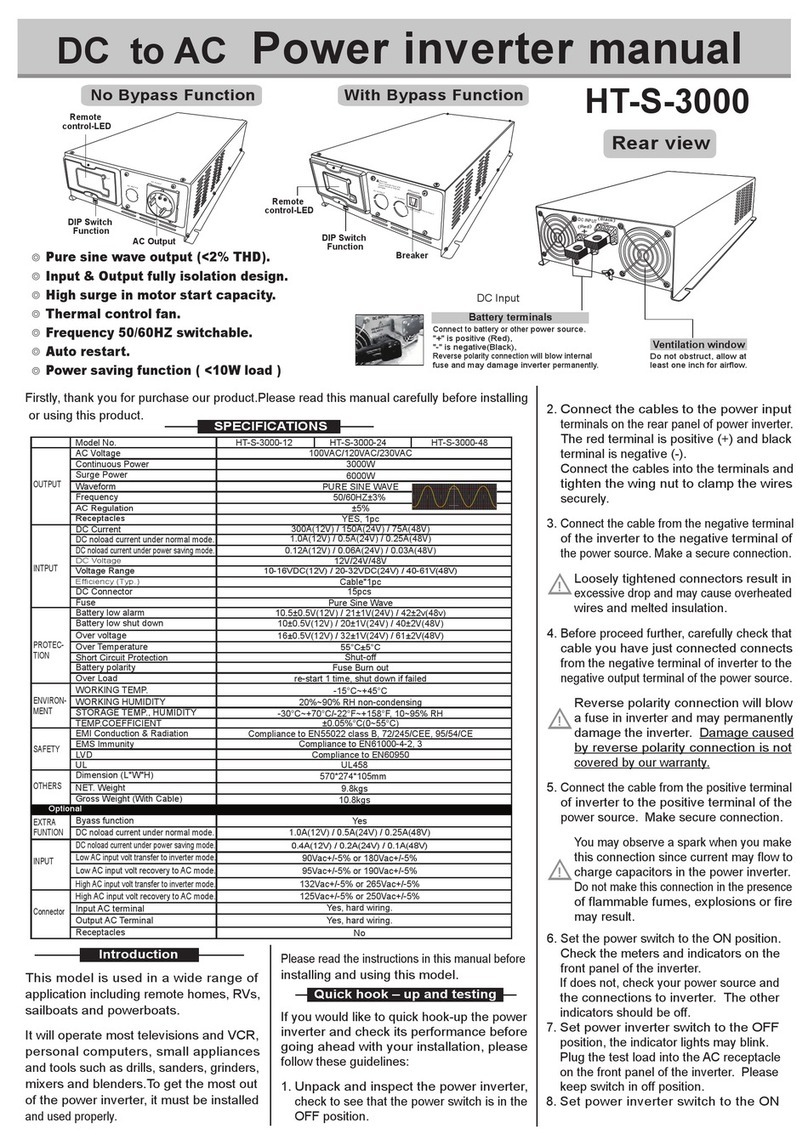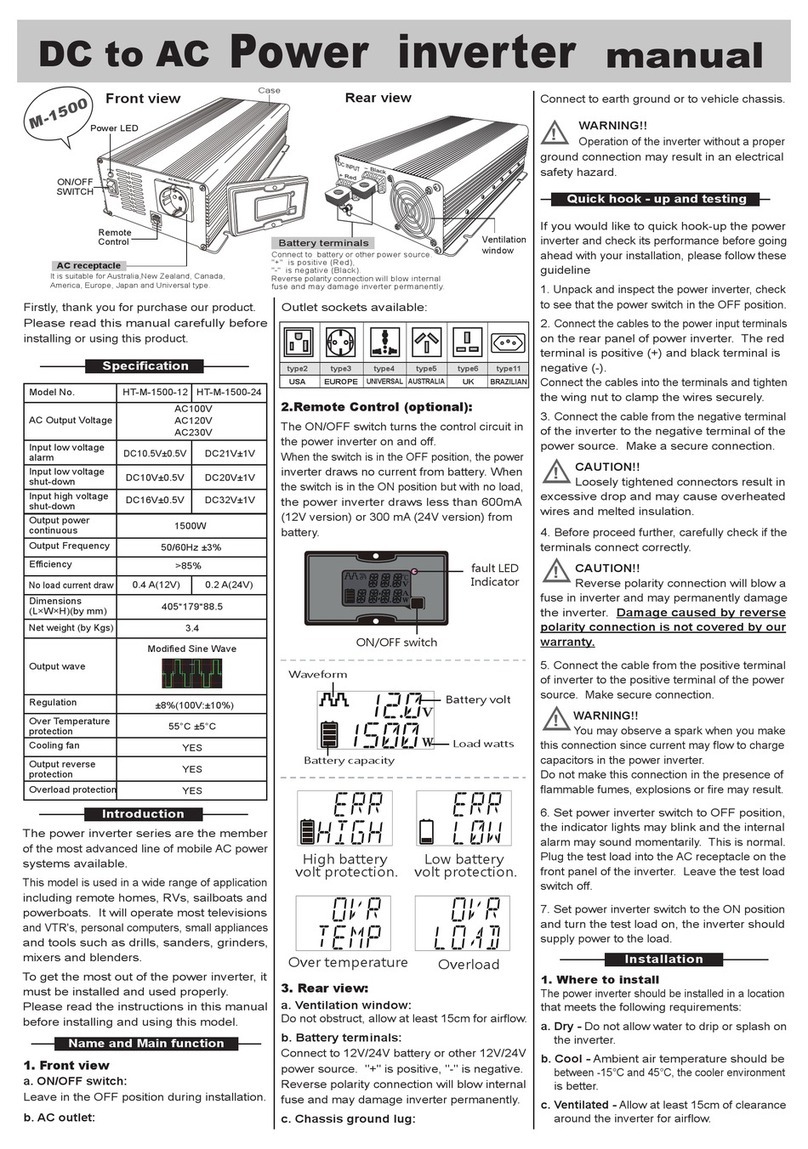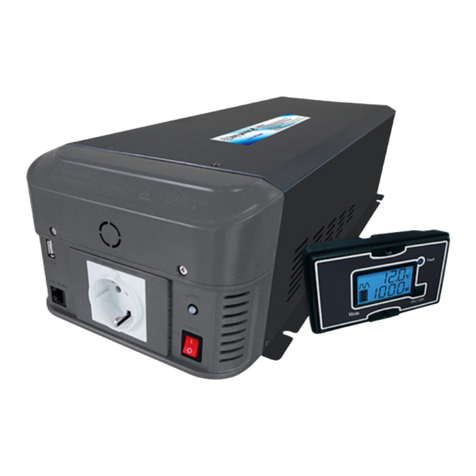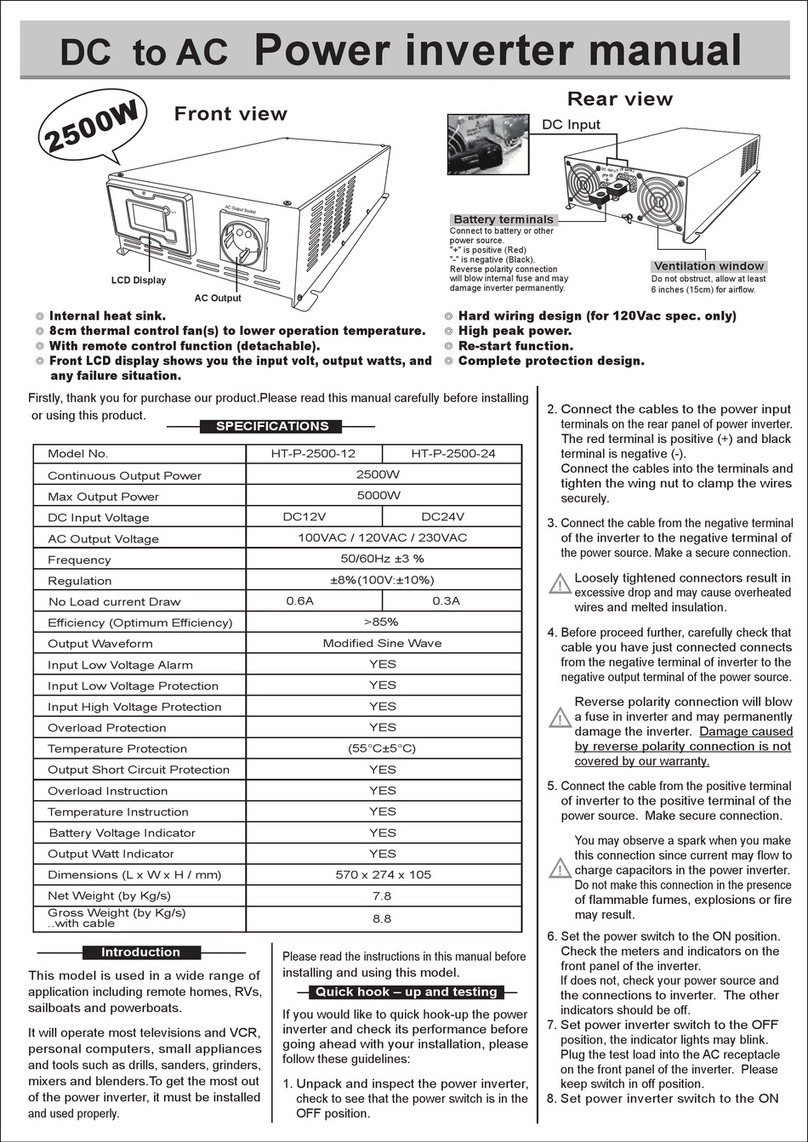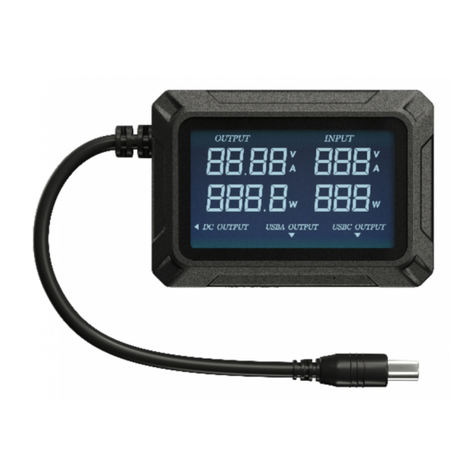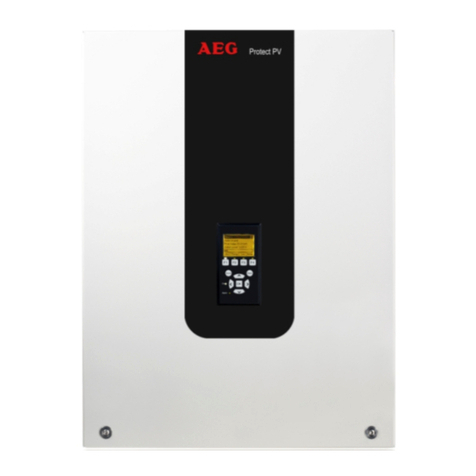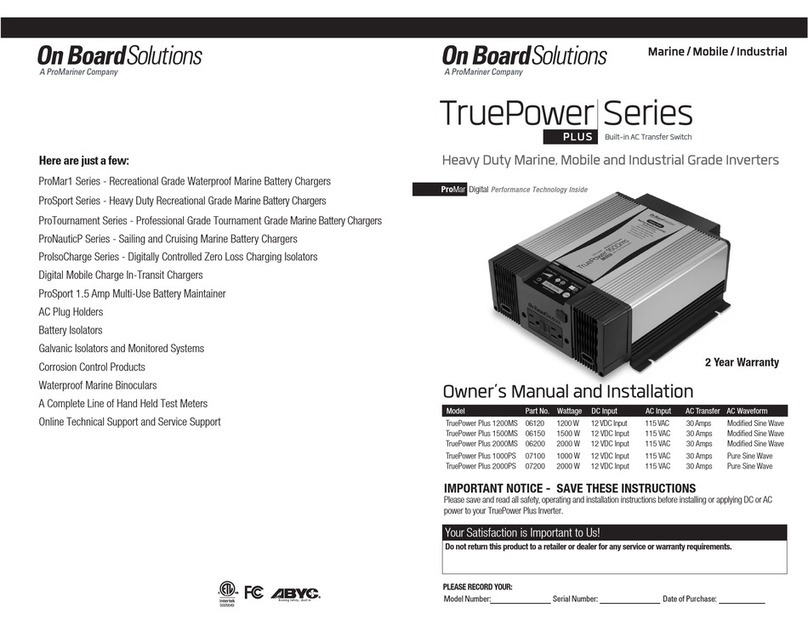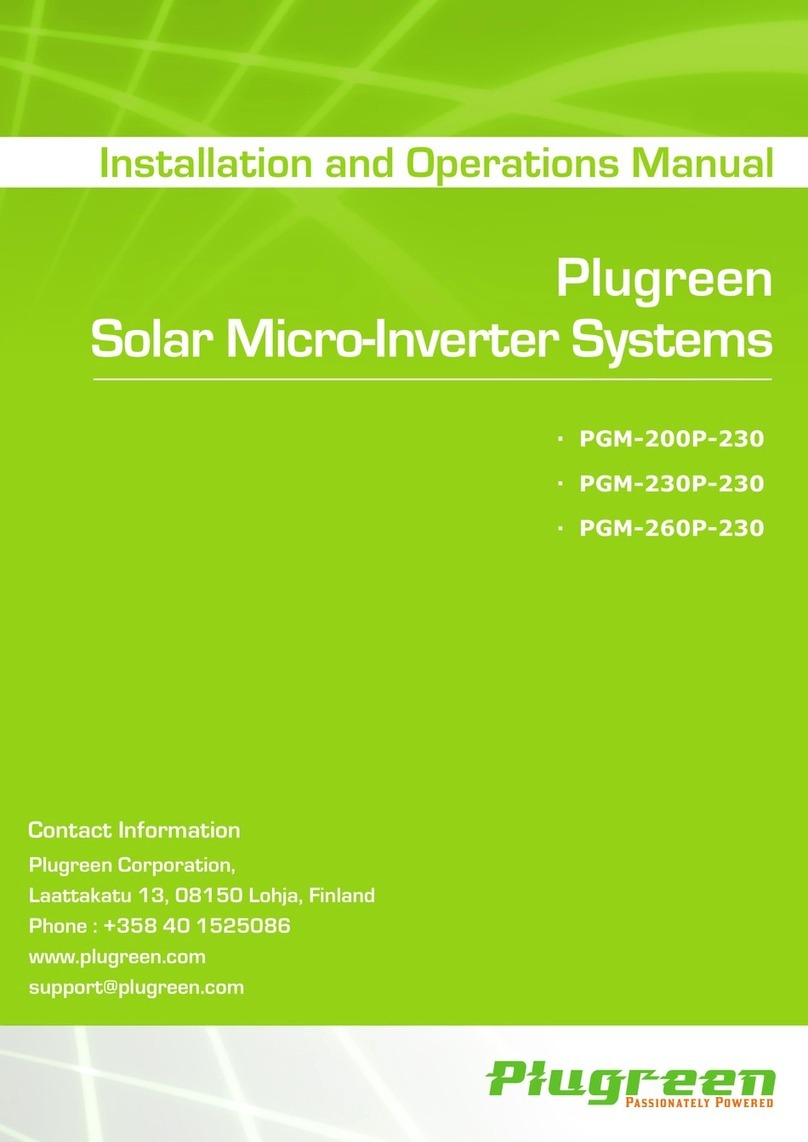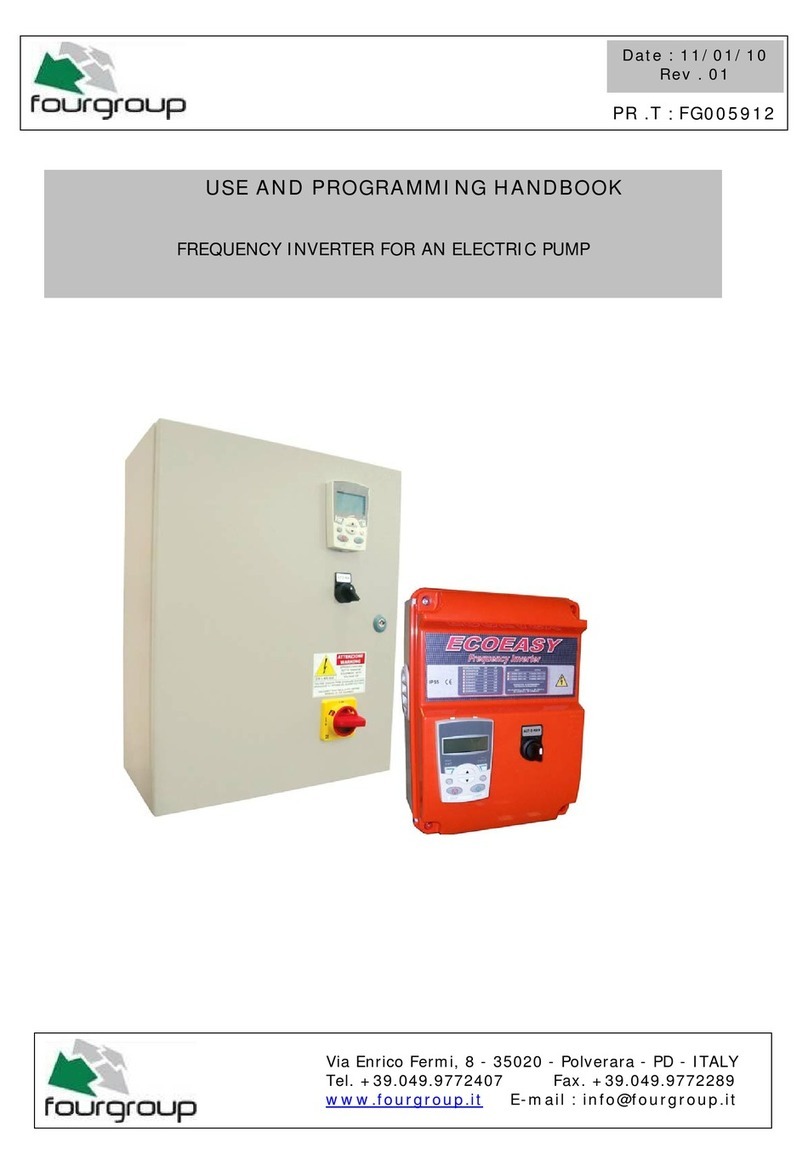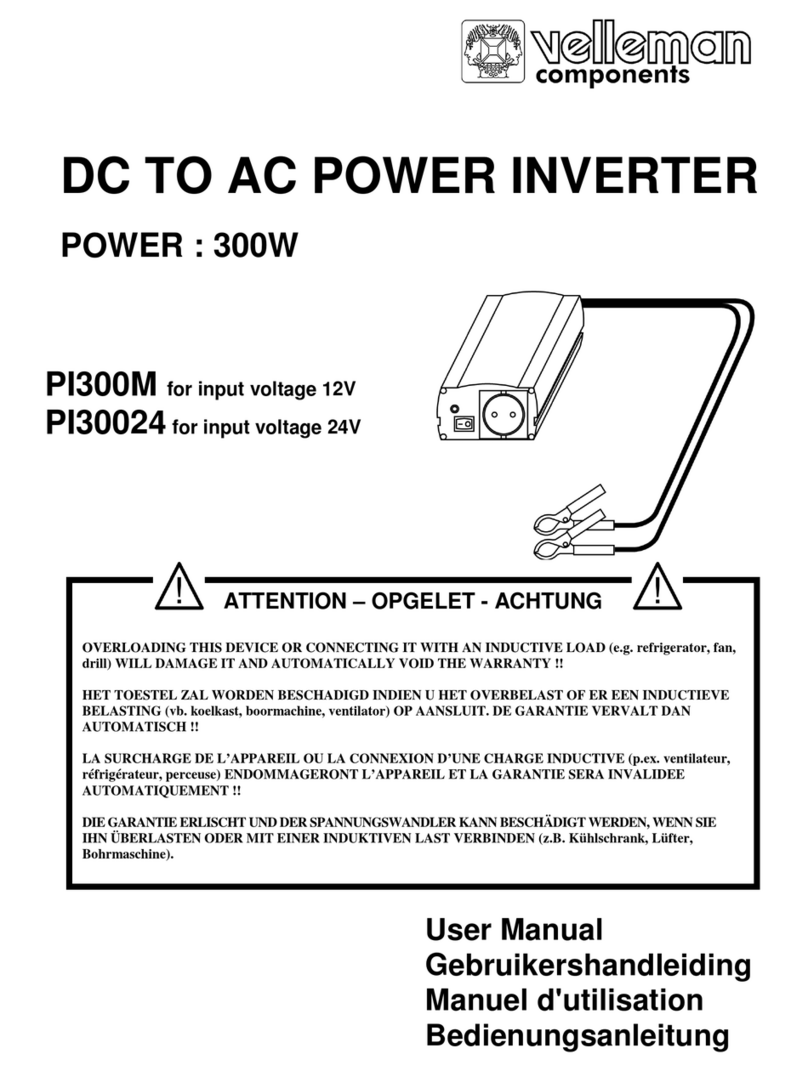
your Amp-hour consumption between charging
cycles and use a battery bank with twice that
capacity.
To calculate Amp-hour consumption first look
at the rating plate on your AC appliance or tools.
Each appliance or tool will be rated in either
AC Amps or AC watts or AC VA (Volts-Amps)
apparent power.
Use one of the following formulas to calculate
the DC Amp-hour draw for a 12 Volt system:
(AC Amps x 10) x 1.1 x hours of operation
= DC Amp-hours
(AC watts/12) x 1.1 x hours of operation
= DC Amp-hours
(AC VA/12) x 1.1 x hours of operation
= DC Amp-hours
For lead-acid and lead-calcium batteries only.
Stage1: Bulk Charge Max 14.5±0.5V, 10A.
Stage2: Absorption Charge 14.5±0.5V, 10~1A.
Stage3: Float Charge 13.6±0.5V, min. 0.5A.
Battery Charger
Solar Charger Controller LED
Troubleshooting
Problem Things to Check
No Inverter Output
1. Battery voltage under load.
2. Battery connections and DC fuse.
3. Circuit breaker on side panel.
4. Thermal condition, high powered loads or inadequate ventilation may cause
overheating.
5. Overloads or short circuit, check for excessive loads or bad wiring connections.
Low Inverter
Output Voltage
Confirm that your volt meter is a true RMS meter. Standard volt meters will not
accurately read the waveform of the inverter. If a true RMS meter is not available,
check the brightness of an incandescent light bulb - if it appears normal, the output
voltage is properly regulated.
Little or No Output
from Battery Charger
1. Wiring connections-check both the AC and DC connections.
2. AC input voltage -- low voltage input will result in low DC output current.
3. AC input spec. isn't correct to Inverter/Charger spec.
Warning:
Wrong DC volt or AC volt spec., or reversed polarity is not covered by the warranty.
Charging started
Multistage Battery Charger
DC Voltage
DC Current
Time
Bulk stage
Constant current
at maximum
charge rate
Absorption stage
Constant voltage
at Absorption
voltage setting
Float stage
Constant voltage
at the Float
voltage setting
Load current on demand
Charger LED
Indicator Red Red Orange
fault LED Indicator
Remote control-LCD
Power LED
Waveform
Battery volt
Load watts
Battery capacity
High battery
volt protection. Low battery
volt protection.
Over temperature / Overload
5.
Connect the cable from the positive terminal
of inverter/charger to the positive terminal of
the power source. Make secure connection.
WARNING!!
You may observe a spark when you make this
connection since current may flow to charge
capacitors in the power inverter.
Do not make this connection in the presence
of flammable fumes, explosions or fire may
result.
6. Set power inverter switch to the ON position
and turn the test load on, the inverter should
supply power to the load.
To achieve 50% cycling you should calculate
Batteries
If you would like to quick hook-up the power inverter/
charger and check its performance before going
ahead with your installation, please follow these
guideline.
1.
Unpack and inspect the inverter/charger, check
to see that the power switch in the OFF position.
2.
Connect the cables to the power input terminals
on the rear panel of inverter/charger. The red terminal
is positive (+) and black terminal is negative (-).
Connect the cables into the terminals and tighten
the wing nut
to the wires securely.
3.
Connect the cable from the negative terminal
of the inverter/charger to the negative terminal
of the power source. Make a secure connection.
CAUTION!!
Loosely tightened connectors result in
excessive drop and may cause overheated
wires and melted insulation.
4.
Before proceed further, carefully check if
the terminals connect correctly.
CAUTION!!
Reverse polarity connection will blow a fuse
in inverter/charger and may permanently
damage the inverter/charger. Damage
caused by reverse polarity connection is
not
covered by our warranty.
Calculate the above for every AC appliance or
tool you intend to use on your inverter. This
will give you the total number of Amp-hours
used between recharges. Size your battery bank
using this number as a guideline. A good rule
to follow is to size the battery bank about 2 times
larger than your total Amp-hour load requirement.
Plan on recharging when 50% discharged.
Many electric motors have monentary starting
requirements well above their operational rating.
Start up watts are listed where appropriate.
lndividual styles and brands of appliances may
vary.
charger status display
Green LED flashing regually --- battery charging and all normal.
Green LED flashing irregually --- No battery / solar panel voltage is < 14.6V (+/-0.5V).
Green LED off --- No solar power / Solar panel voltage is similar to battery volt, no charge.
In all formulas, 1.1 is the factor for inverter/charger
efficiency.
Quick hook - up and testing
compartment, overheating may result.
CAUTION!!
Risk of electrical shock. Both AC & DC voltage
sources are existed inside this equipment.
Each circuit must be individually installed.
CAUTION!!
Risk of electrical shock. Do not remove
cover, no user serviceable parts inside.
Refer servicing to qualified service personnel.
APPLICATION INFORMATION:
Provided with integral electronic protection
against AC & DC overloads.
